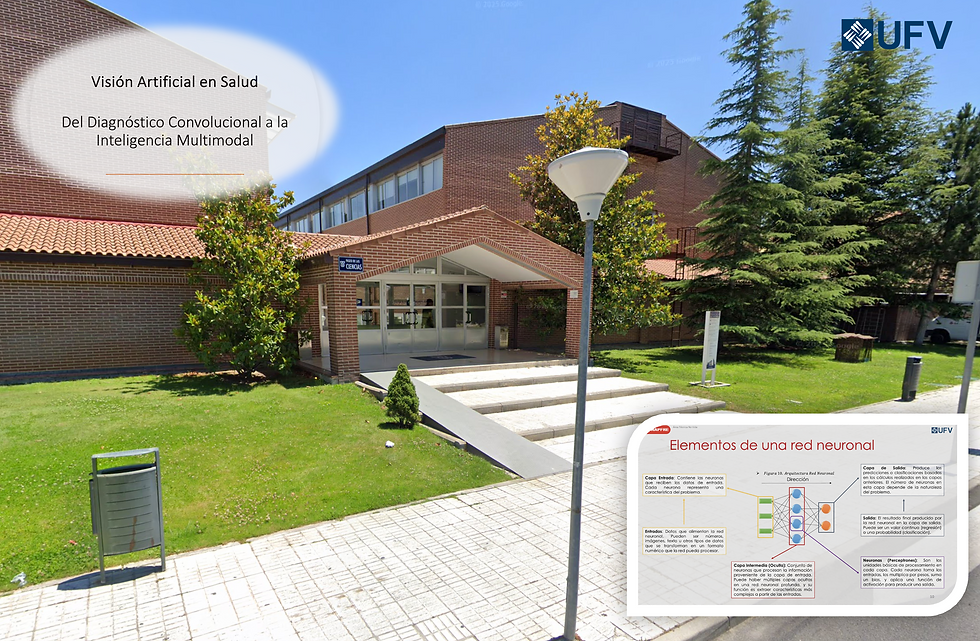
Bibliography
Throughout my career, I have evolved from statistics to artificial intelligence, exploring the potential of Data Science, Computer Vision and Natural Language Processing to generate impact in business and research. My path has been marked by curiosity, the search for innovative solutions and the application of advanced models to solve real problems. You can check out my CV .

Raúl Artigues Femenía

I was born in Pedreguer, a small town in the province of Alicante with barely 8,000 inhabitants. Since childhood, I have always been fascinated by the world of mathematics, although my first professional dream was not related to numbers but rather to investigation and analysis, as I wanted to become a private detective.
However, it wasn’t until my senior year of high school that a math teacher introduced me to the potential of statistics, sparking a passion that would go on to define my professional future.
Academic Journey: From Statistics to Artificial Intelligence
In 2018, I decided to pursue a degree in Statistics at Miguel Hernández University of Elche. At that time, I had the option to move to Madrid, but at just 18 years old, relocating to the capital felt premature, so I chose Elche instead. During this stage, I not only gained a solid foundation in statistics but also experienced a unique academic environment with my peers in what we called the “statistics apartment.” We transformed one of the rooms into a study hall with a large whiteboard, where we tackled everything from queueing theory to sampling techniques, blending academic rigor with a spirit of collaboration and camaraderie.
I completed my degree with a final grade of 8.1, a significant achievement in the field of science. My Final Degree Project (TFG), supervised by Joaquín Sánchez Soriano, focused on the application of queueing theory to hospital emergency systems, earning the highest score of 10. Although we attempted to publish the results in a scientific journal, the publication process ultimately did not materialize.
After finishing my degree, I realized that to specialize further, I needed deeper training in Data Science, Machine Learning, and Deep Learning. This led me to apply for the Master’s in Big Data Science at the University of Navarra. Following a demanding selection process, I was accepted, and this decision completely changed my professional trajectory. It was here that I discovered the true potential of Deep Learning, a field that completely captivated my interest.
First Steps into the Professional World
During my master’s program, I understood that practical experience was just as essential as theoretical knowledge. When I saw an opening, I decided to apply for a Data Scientist position in Human Resources at MAPFRE Spain. Despite having no prior experience in HR, I successfully passed the selection process and joined the Compensation team. During this period, I worked on designing Machine Learning models for salary structures, applying advanced techniques in Natural Language Processing (NLP) and statistical analysis to enhance strategic decision-making.
At the same time, I had the opportunity to meet Borja Balparda, who offered me a position at Data Value Management, a startup where I currently work as an AI & Computer Vision Engineer. Here, I have developed projects related to image processing, facial aesthetics analysis, and OCR for cosmetic product classification. Additionally, I have contributed to the implementation of NLP systems and Language Models (LLMs) for information retrieval.
Transition to Computer Vision Engineering
While working at MAPFRE in Human Resources, I met Mario Encinar, who introduced me to an opportunity in the Business Intelligence department, specifically in Technical Business Intelligence, with a focus on Computer Vision. This transition marked a major professional leap, allowing me to specialize in my core area of interest.
Currently, I work as a Computer Vision Engineer & Senior Data Scientist at MAPFRE, leading the development of computer vision solutions for digital verification of vehicles, businesses, homes, and communities. My role involves the design and deployment of Deep Learning models, applying data-driven techniques to enhance operational efficiency and accuracy.
In the coming years, I envision myself leading a highly innovative team in the field of Data Science, merging the power of Large Language Models (LLMs) with image analysis using advanced neural networks, while also recognizing the continued importance of tabular data and traditional Machine Learning models.
My goal is for this team to bring significant value to businesses, because, in the end, the most important aspect is not the type of algorithm but its impact on the company and how we can explain it in a comprehensible way. Neural networks are often considered a “black box”, but by understanding their mathematical foundations—from convolutions to transformers and vision transformers—we can interpret their behavior and make better strategic decisions.
Academically, I have always aspired to pursue a Ph.D., whether in an industrial or traditional setting, to contribute to Data Science research. I am driven by the idea of introducing innovation in neural networks, leaving my mark in this ever-evolving field. Earning a doctorate has been a long-term goal of mine—not just for the title itself, but for the impact that research can have on the scientific and technological community.
Additionally, teaching is a passion of mine. I firmly believe that inspiring knowledge transfer is essential for effective learning. Too often, students shy away from subjects like mathematics simply because they have never been shown its beauty and real-world applications. Neural networks—and mathematics itself—are fascinating. If we can clearly explain their core principles (how they work, the calculations they perform, the role of derivatives, optimization functions, and matrix multiplications), students will develop a deeper understanding of Artificial Intelligence and its true potential.
I have already had the opportunity to teach at the Universidad Francisco de Vitoria in Madrid, where I lectured on Neural Networks and their impact on the medical field. This teaching experience reinforced my vocation for education and my belief that AI training should be firmly grounded in mathematical principles and applied to real-world problems with social impact.
Beyond research, I would love to take on a teaching role at the university level, whether in undergraduate or master’s programs, mentoring the next generation of Data Science professionals. Understanding AI from its mathematical core not only enables the development of better models but also helps us make more informed and responsible decisions.
Ultimately, my future professional path is a blend of innovation, leadership, research, and education—all driven by the mission to keep learning, contributing, and transforming the world of Data Science and Artificial Intelligence.

Looking to the future: Innovation, Leadership and Academia


Deep Learning Teaching at Universidad Francisco de Vitoria in Madrid
